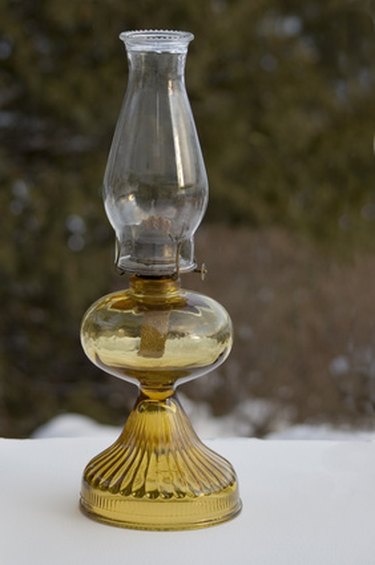
An oil lamp is a simple vessel with a wick that burns oil. People use oil lamps to produce heat or light.
History
Video of the Day
Historians believe that the first oil lamp was made during the Stone Age. Studies suggest that people used hollowed-out rock, lined with absorbent moss, which was soaked with animal fat, and then ignited. Little did they know that this simple principal would serve as the basis for the many more elaborate designs to follow.
Video of the Day
Benefits
Oil lamps produce no smoke residue. Plus, they're odorless so they won't compete with any other fragrances in your home. Compared to a wick on a candle, a wick on an oil lamp won't take as long to burn out.
Function
In the past, oil lamps were used for religious and hunting purposes, as well as to bring light into the home before electricity. Presently, people keep oil lamps for emergencies involving power outages, as well as for decorative purposes, and many consider them to be collectibles.
Types
Oil lamps come in a variety of shapes, designs and sizes, and can be made of different materials with glass being the most popular. The types of oils that can be used in an oil lamp include paraffin (wax) oil, generic lamp oil, kerosene, and citronella.
Warning
Gas-based and petroleum-based lamps are safer to use and operate than oil lamps (or lanterns). They are also perfect for emergency lighting.